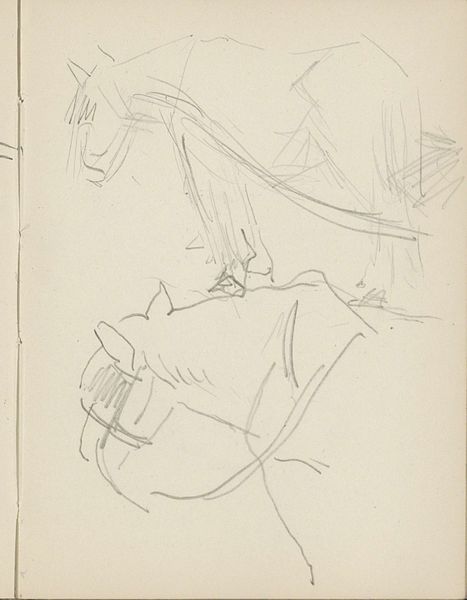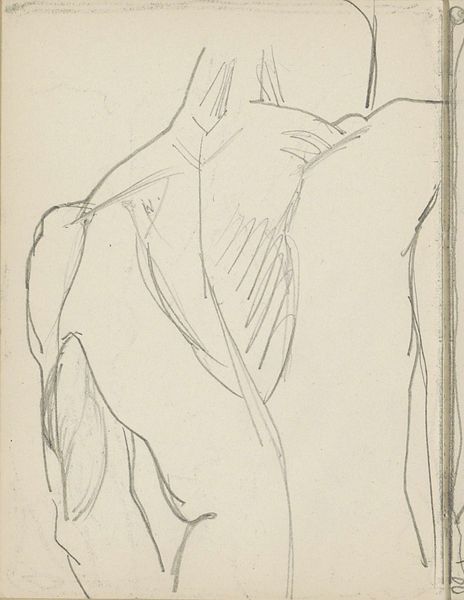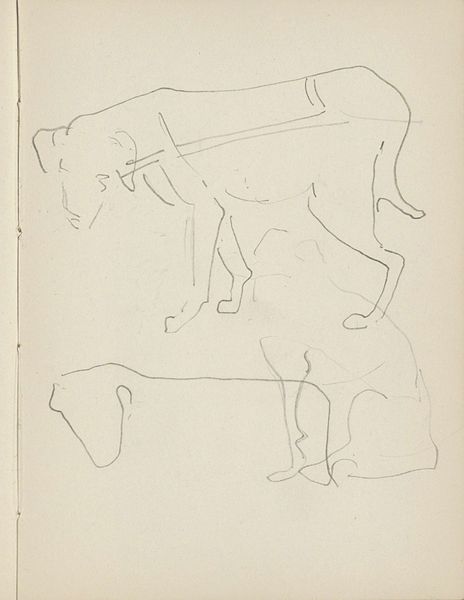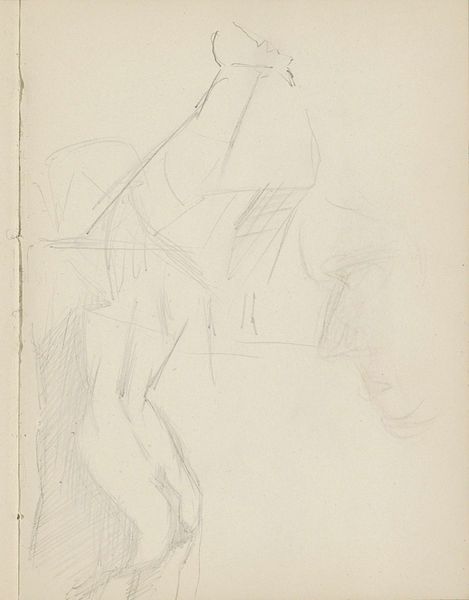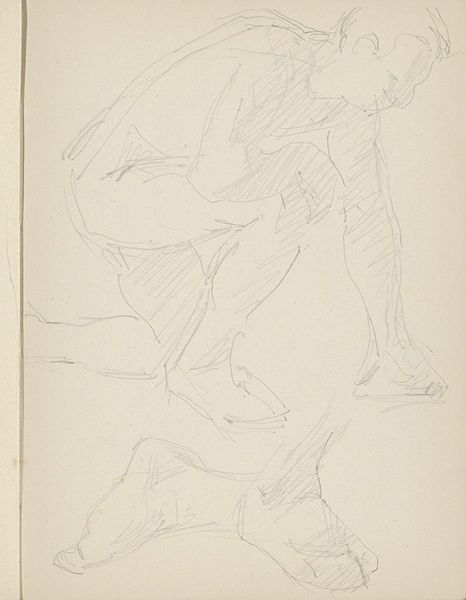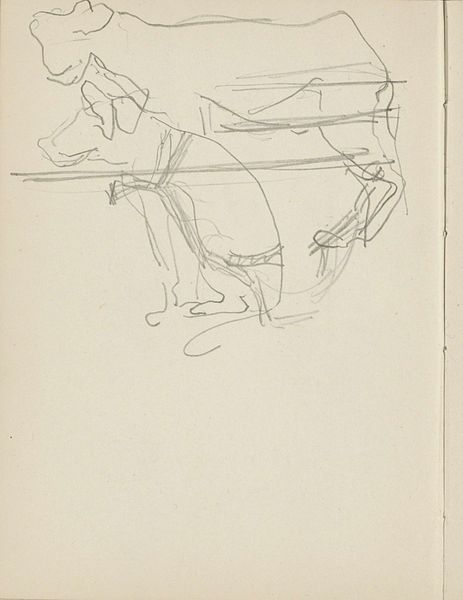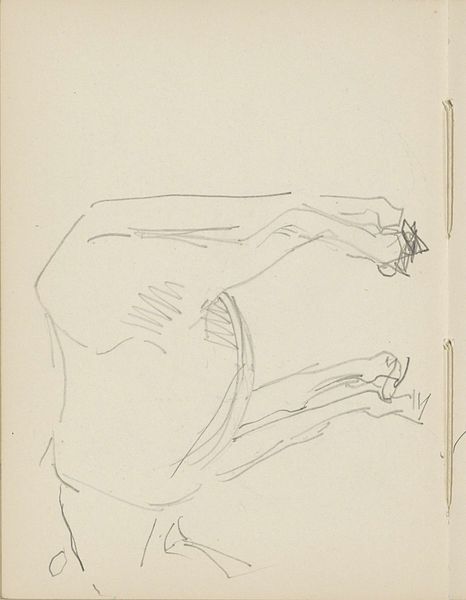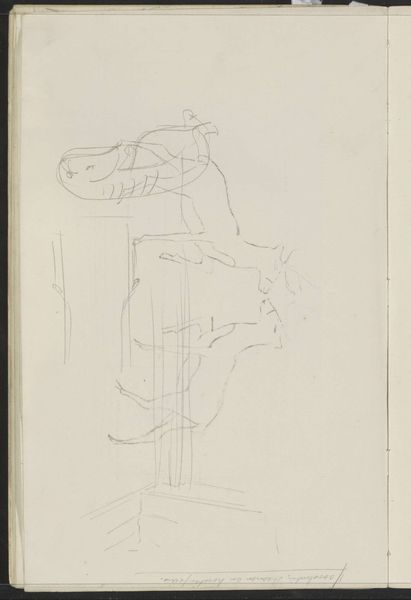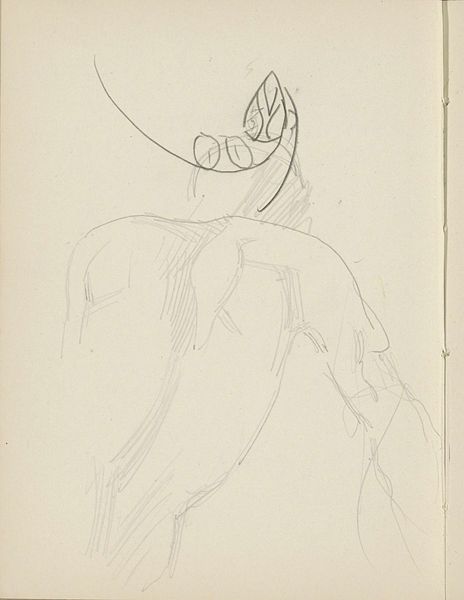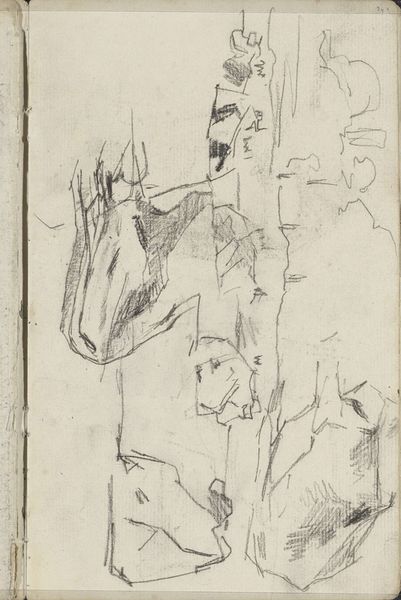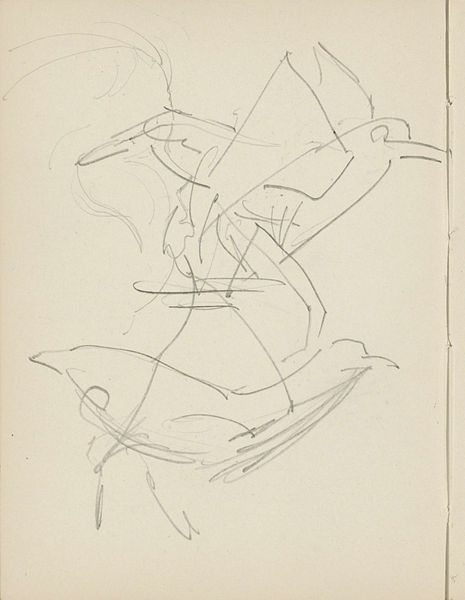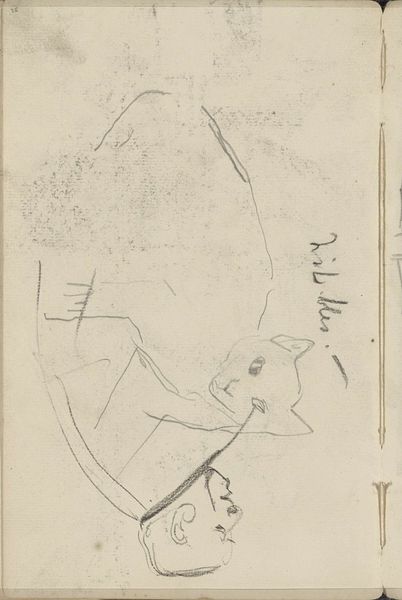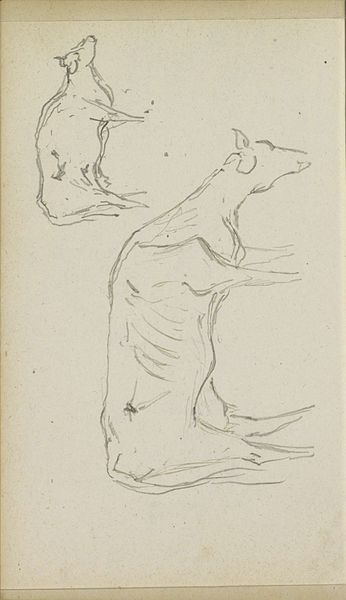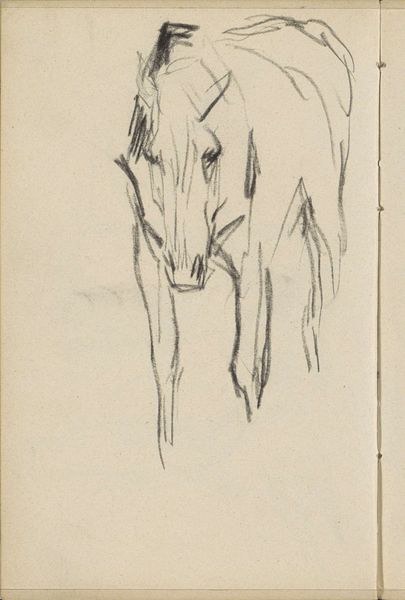
drawing, pencil
#
portrait
#
drawing
#
pencil sketch
#
figuration
#
pencil
#
horse
#
line
Copyright: Rijks Museum: Open Domain
Curator: Well, what’s your first impression of this one? The piece we’re looking at is a pencil drawing titled "Paard en een kop van een ezel" – "Horse and a Donkey Head"– by Reijer Stolk. It’s part of the Rijksmuseum’s collection and dates somewhere between 1906 and 1945. Editor: It feels like a whisper. Fragile, unfinished, the ghost of an idea. The linework is so delicate, almost tentative. Curator: Indeed. Stolk worked during a period of significant social upheaval. I can’t help but wonder about his positioning as an artist in Dutch society – particularly considering that art making and enjoyment has been coded as higher-class while agricultural labor like tending horses and donkeys has been deemed lower class. Was he critiquing social stratification here by choosing farm animals as his primary subjects, do you think? Editor: I see your point, but I’m not sure it goes that far. It reads to me more like an exercise in form. Notice how the spareness of the lines allows our eyes to complete the image, forcing us to engage actively with its construction? The layering of the two heads, horse and donkey, creates an interesting sense of depth despite the overall flatness of the composition. Curator: Perhaps, but one cannot ignore that animal representation itself, especially during the early 20th century, could act as a proxy for explorations of labor and class distinctions. Were Stolk’s animals a nod to working-class identities in the Netherlands, then, or not? It begs a series of theoretical, cultural, and sociological readings. Editor: Perhaps we're both reading into this sketch something of our own agendas! While that sparse execution might open possibilities of social interpretation, it primarily offers formal challenges around representation – which are quite remarkable here in my view. Curator: It does seem a bit unclear for me to arrive at firm political conclusions with it, yes. All of it seems up for debate. Editor: Absolutely. That’s why art like this stays with us – these seemingly minor details trigger endless different points of engagement and interpretations!
Comments
No comments
Be the first to comment and join the conversation on the ultimate creative platform.
